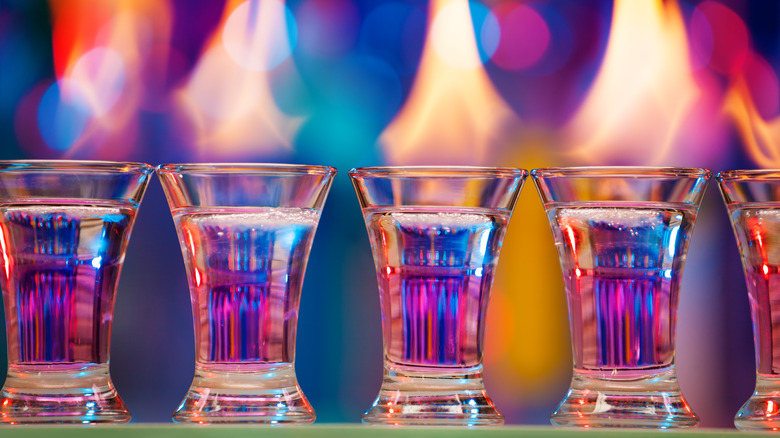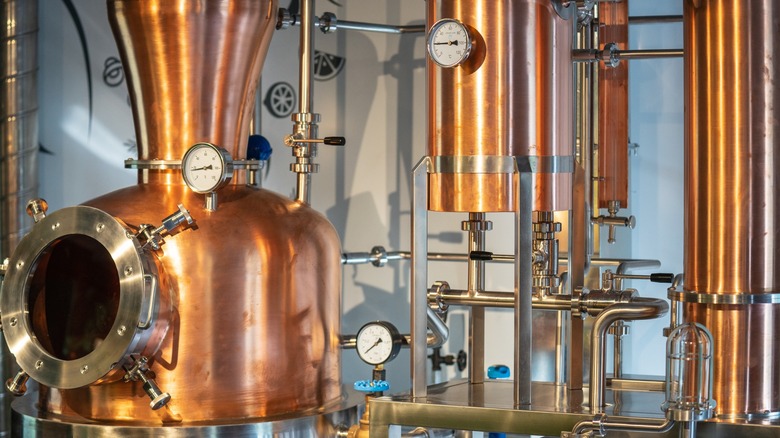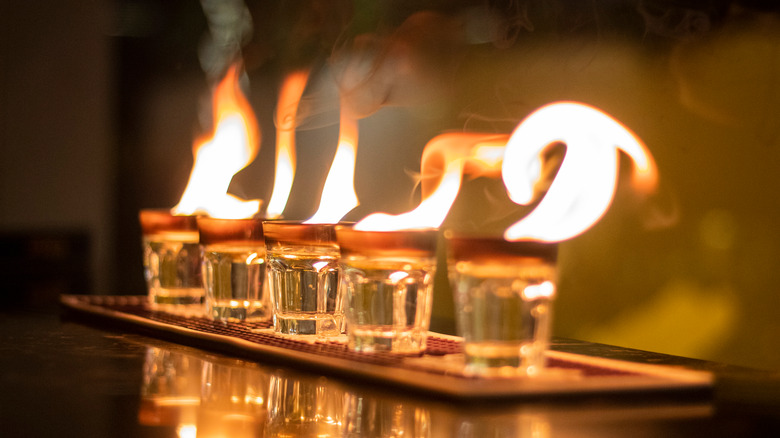What Vodka Is Actually Made From And Why It Gets Set On Fire
The name "vodka" originates from the Russian word for water, "voda" — which perfectly encapsulates the ubiquitousness of this staple booze. Though you can find both American and Russian vodkas in almost any bar or liquor store you walk into, its production process is both straightforward and intricately complex.
Vodka's creation involves multiple steps from inception to distribution. Like other hard liquors, two main stages significantly impact the quality and strength of the final product: fermentation and distillation. These stages produce the actual alcoholic components of the beverage. Initially, cereal grains such as wheat or rye — and sometimes potatoes — are boiled with water and yeast. This mixture is then left to ferment for one to two weeks, during which the components break down into ethanol. After straining this liquid, distillers heat it once more and collect the evaporated liquid in a flask.
Then comes the fun part: lighting the vodka on fire. Distillers use this flammability test to determine whether a batch is strong enough to be sold. If the vodka lights up, it's good to go. If not, it's sent back to be distilled again.
What's the deal with distillation?
Distillation often occurs multiple times to purify the vodka, enhancing its smoothness — pure vodka cannot have any flavor — while increasing its alcohol concentration. This is why bottles of vodka become more expensive the more they are distilled, as indicated on their labels. However, over-distilling can result in a beverage that's too pure, resembling the notorious Everclear. At this stage, the vodka becomes concentrated alcohol, deviating from the standard 40% ABV.
One way to ensure vodka has reached an appropriate alcohol content is by testing its flammability. Distillers use this test to confirm that their batches meet the required strength for sale. If the vodka doesn't ignite, it is sent back for further distillation. Contrary to popular belief, the flames distillers seek are not roaring infernos, but short bursts of blue flame that are easily extinguished. If you attempt to light your vodka — which we do not recommend — and have difficulty putting out the flame, it's likely that you're drinking something significantly stronger.
Filtering, flavoring, and flames
Sometimes, distillers introduce botanicals into the distilling process to create flavored vodka, similar to how juniper berries are used in gin to give it a distinct piney aroma. Before distribution, makers might also pass the distilled product through a carbon filter. This practice has inspired multiple social media users to experiment with running their vodka through a Brita water filter to see if it changes the flavor profile. (Spoiler: A 2006 episode of "Mythbusters" concluded that this doesn't actually alter the liquor's chemical composition.)
Makers usually dilute the product with water to make sure it's not too alcoholic. This is done if the ABV content is too high or if the flame test produces excessive fire. Since pure vodka is a highly neutral liquor, adding water doesn't significantly affect its taste, unlike with whiskey or certain types of rum. Crafting vodka is a delicate balancing act; a subtle blue spark upon exposure to fire indicates a drink that's neither too strong nor too weak. If you order a flaming shot of vodka from a bartender, just remember not to drink it while it's still aflame.



